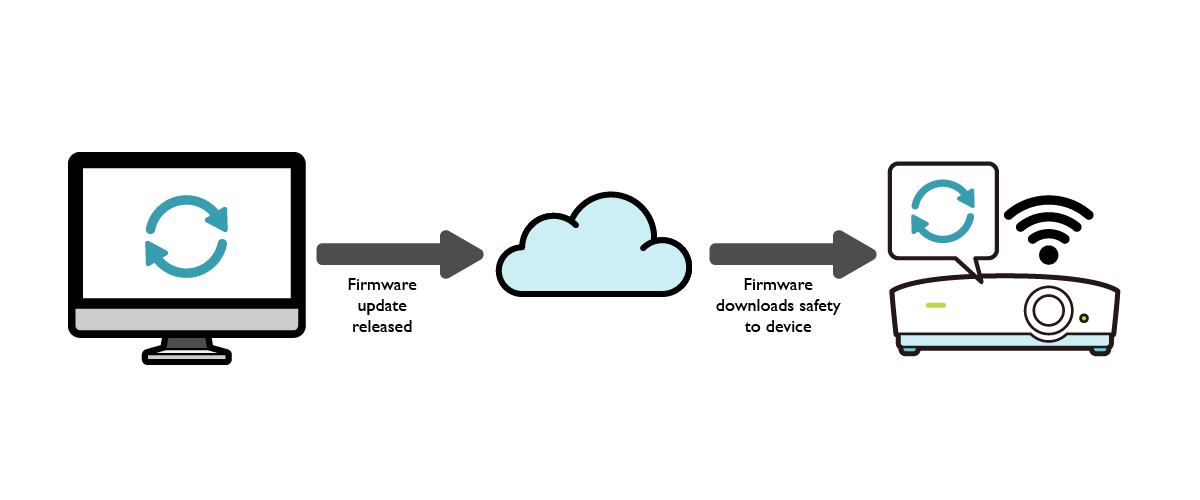OTA (Over-the-air) Introduction to BenQ Smart Projectors
- BenQ
- 2020-09-07
In the era of the Internet of Things (IoT) where seemingly all devices, from TVs all the way down to lightbulbs, are “smart” and wirelessly connected, there has been a greater need to make sure that these connected devices stay as up-to-date as possible so as to ensure their security, compatibility, and full functionality. But what was once a bothersome task involving wired connections, software versions, and an assortment of procedures, has increasingly been streamlined as a result of the wireless connectivity that started it all. More and more, devices that are wirelessly connected to the Internet have begun relying on updates done over-the-air.
Over-the-air (OTA) as its name implies, refers to the programming – mainly updating – of the software that controls a device (firmware) and/or the applications installed on it via the device’s wireless connection. This process is most commonly seen in our daily lives with smartphones where, depending on the user’s personal settings, the operating system automatically updates itself whenever a new version is released.

The biggest benefit of OTA updates is immediately apparent based on its description: by utilizing OTA updates, you remove the hassle of updating via a physical connection. This is even more true for the IT departments of businesses and large organizations. Because whereas for a single user a physical connection and some additional steps might not seem much of a deal, for an organization with hundreds of devices spread across a sprawling campus, the task of updating in and of itself, not to mention the technicalities that may be involved, such as different product models, varying software versions, difficulty in accessing devices and so on, could take a large chunk of time.
Another major benefit to using OTA updates is that most software that supports OTA updates feature a notification mechanism that allows for prompt notice of the availability of updates. Whereas for traditional updates, it was incumbent upon the user, or IT department, to take the initiative to check if an update was available, OTA updates let the user know right away that an update is available and make their decision whether to update then and there.
Can the benefits of using OTA updates go beyond what’s been described above? Outside of the traditional benefits that OTA updates bring, there are still multiple ways in which an OTA update mechanism can be enhanced. With this in mind, BenQ has further optimized the design, engineering, and execution of the OTA updates found in our products by implementing the features described below to ensure greater convenience and reliability for our users.
BenQ’s OTA system utilizes Amazon Web Services servers, which are located in regional hubs throughout the world, and are paired with a Content Delivery Network (CDN) that allows the system to identify the closest AWS server location for each device and run the OTA update through the corresponding server, thereby ensuring a speedy and reliable OTA download connection.
The hardware on all BenQ devices that support OTA updates are specially engineered with an A/B seamless design in their system’s memory that prevents disturbances, such as unexpected power-offs or shortages, from causing the update to fail, or worst-case scenario, system damage.

